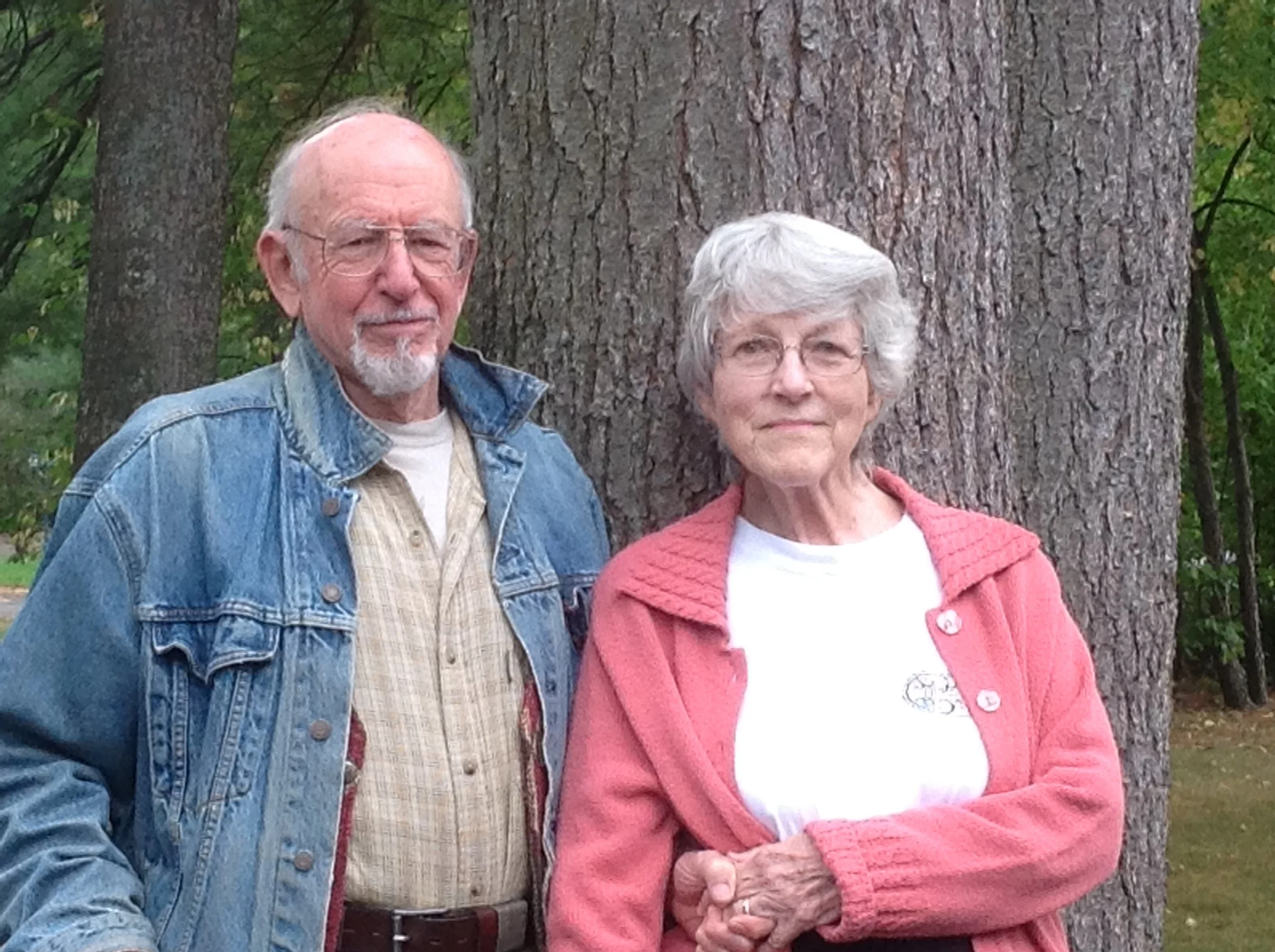
Dr. Austin Clarkson and
Beverley Clarkson
To share life on
Turtle Island
-
The Late Dr. Austin Clarkson and Beverley Clarkson, Knowledge Keepers
Biography
The Late Dr. Austin Clarkson, professor emeritus, York University, Director, The Milkweed Collective.
Beverly Clarkson, Psychotherapist and Author
Both are Knowledge keepers.
Statement
We were honoured to be present when thirteen artists—five Indigenous and eight of Settler origin—presented what they had made during Round 2 of the Call #83 Reconciliation Art Project. Their voices joined in tones of honesty and respect as they showed their paintings and told of the process they had been through.
Jennie Clark was the first to present. In her painting, “Hope”, clouds of blue, green, yellow and white obscure a topographic map, as though spirit is moving freely, unhampered by the earthbound grid. Marilyn George, Holy Star Woman was inspired by Clark’s piece to depict a mother and father holding their infant. The hope of the couple rests in the love they hold for each other and their child. Joanna McEwen responds with “Tina”, a tender portrait of Tina Fontaine, her beautiful, child-like face wreathed in apple blossom. The egg tempera miniature memorializes the aching loss of a young soul to racist violence. In “Fragile and Fractured” Jeanette Luchese scatters flecks and shards of pigment in anger at the lack of accountability for the destruction of young Indigenous lives. Paul Shilling, Dazaungee follows on with a portrayal of the “warrior” who causes harm. Indigenous artist Hillary Smith responds with “Relief”, the vulnerable warrior who shows her truth and lets tears flow to release and assuage the pent up pain.
A highlight of Round 1 of the Call #83 Project was the large canvas by Mercedes Sandy with which she conveyed the effects of the residential school on her family. Mercedes was a new mother when her turn came to make a piece for round two, so she provided photos of her family, including one of her partner, herself and their newborn boy. The photos are mounted on an old quilt sewn by children from a residential school in Montana. Peter Adams focused “Beyond Darkness” on the loving circle of arms and hands from Sandy’s family. He projected it across the Canadian landscape in answer to its “dark and shameful” past and inscribes words from Justice Murray Sinclair’s Report of the Truth and Reconciliation Commission. In “Circling the Square” Jon Oelrichs extends the cluster of hands to the family of man whose hands encircle the Earth. The colours of the Medicine Wheel call forth the peoples of the world. Christina Luck returns to the here and now with “Plan of Action”. The glass of water on the table refers to Oelrichs’ piece and reminds us to think globally and act locally. Mary Lou Meiers casts her mind back 150 years to when her ancestors arrived on Turtle Island from Europe and forward 150 years to the consequences of “the decisions we make now”. Negik, Paul Whittam followed with “Seven”. He depicts the three past generations, the present one and the three yet to come in the trees and winds. Xavier Fernandes brings the process to a close with “The Act of Sharing”. The two masks of Negik’s painting spoke to Xavier of the duality of existence on Turtle Island. It brings the message, “Truth…Listen…Share.”
We are moved by the teachings that emerge from this series of artworks: to bring spirit and matter into good relation, to honour the memory of missing and murdered Indigenous women and girls, to confront those who cause harm, to break the silence around suffering and injustice, to have courage to let pent-up tears flow, to share life on Turtle Island, to choose an action and perform it now, and to nurture the little child that consoles the opposed forces and brings new hope for reconciliation.
With thanks to the artists,
“Chii miigweech, you have given enough.”
Beverly Clarkson and Austin Clarkson


